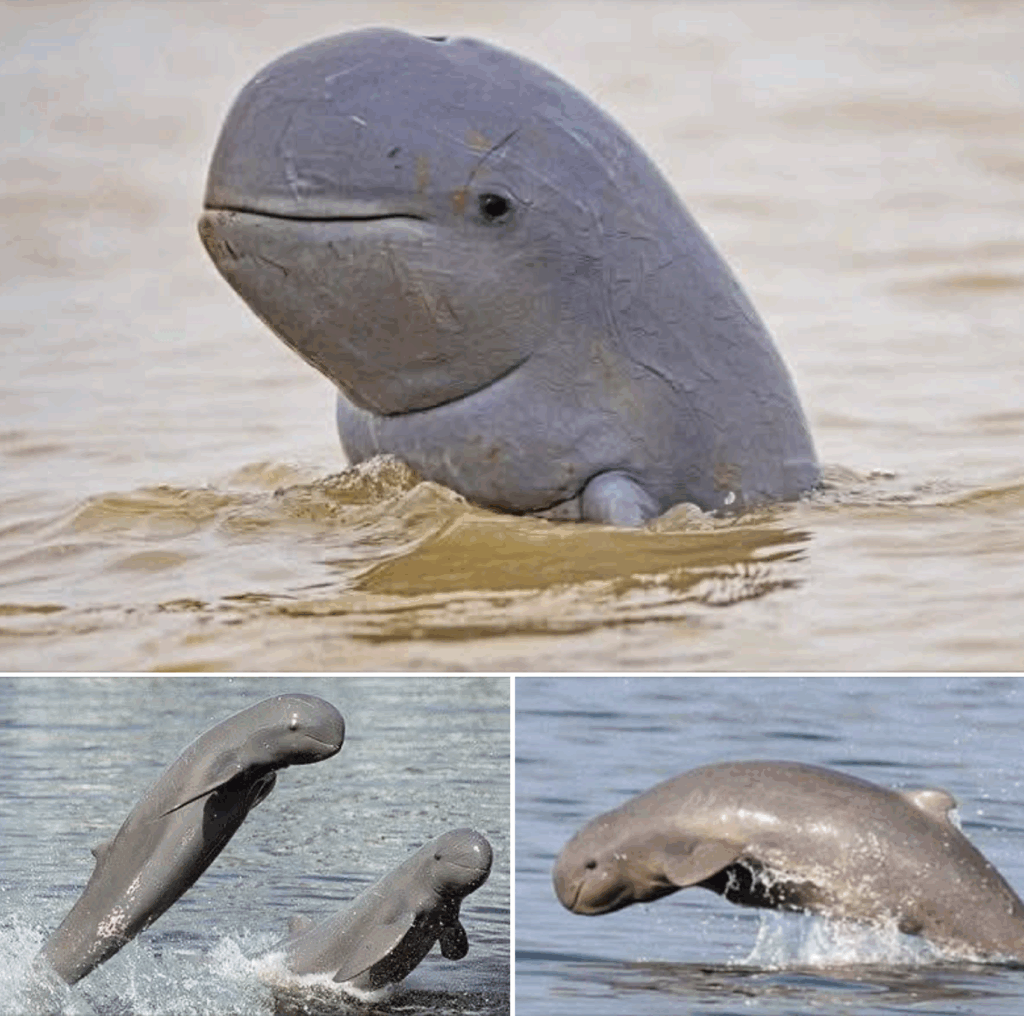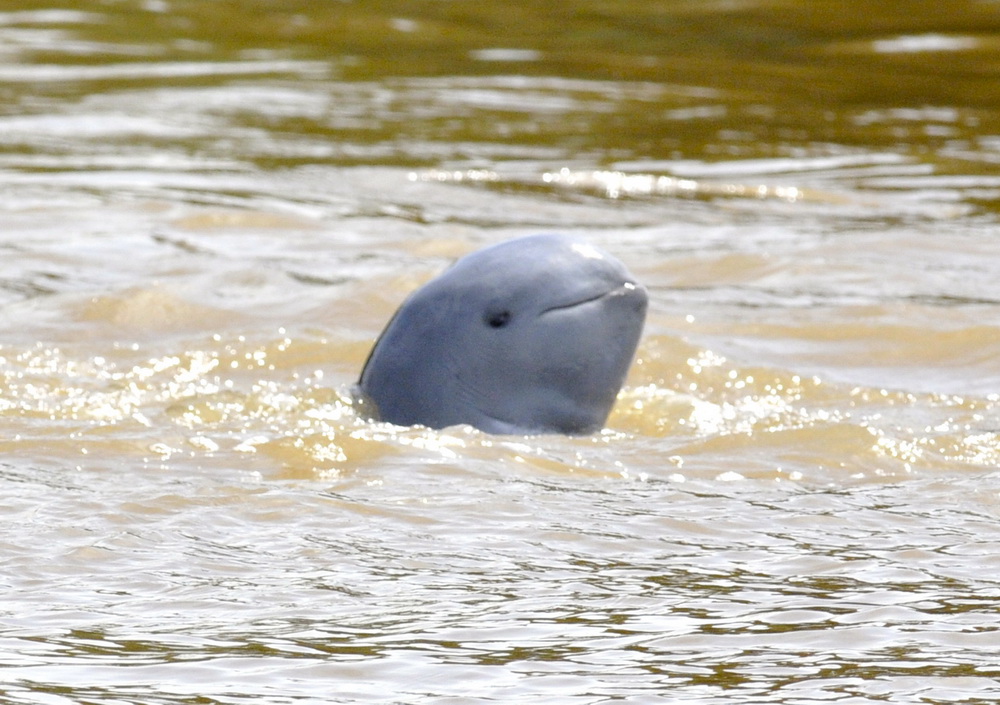Indonesia to block coal ships in Mahakam to protect endangered dolphin
- October 28, 2025 in antaranews
“I want that route closed. The coal stockpiles can be transported overland to the main river, so we can protect this species,”

Jakarta (ANTARA) – The government is stepping up measures to protect the endangered Mahakam dolphin (Orcaella brevirostris), including the establishment of a conservation zone free from coal-carrying vessels to help preserve its population.
Environment Minister Hanif Faisol Nurofiq on Tuesday reported that the species is critically endangered, with only 64 individuals remaining in the rivers of Kalimantan, including two newborns.
“We are working with the Ministry of Marine Affairs and Fisheries (KKP) to halt coal transportation through tributaries,” he said.
Nurofiq identified coal vessel traffic as one of the main threats to the species, prompting the government to ensure that such vessels stay out of tributaries.
In reality, coal vessels continue to operate in the upper river, including around the Mahakam cascade lakes.
“I want that route closed. The coal stockpiles can be transported overland to the main river, so we can protect this species,” he stressed.
He affirmed the government’s serious stance regarding the threat to the Mahakam dolphin, once widespread across the Mahakam River but now confined to tributary areas.
His ministry has appointed four experts, including local indigenous representatives, to focus on protecting the species. Field verification is also being conducted to identify sources of pollution threatening the dolphins.
Earlier, the minister outlined three key strategies to address these threats under Law No. 32/2009 on Environmental Protection and Management: safeguarding biodiversity by ensuring the existence, diversity, and sustainability of natural resources within an integrated ecosystem.
Followed by mainstreaming sustainable development principles into regional policies and planning, including spatial and long-term development programs, to mitigate environmental risks.
Lastly, implementing concrete conservation programs, such as designating protected areas outside forest zones to preserve ecological functions and reduce human-induced damage.
The Mahakam dolphin is listed as Critically Endangered on the IUCN Red List and included in Appendix I of CITES, the highest level of protection under international regulations.
Mahakam river dolphins (pesut) in Indonesia
Status
Critically endangered
Population
Fewer than 50 adults
Scientific name
Orcaella brevirostris
Funding for this project has now finished: IN People’s Trust for Endangered Species
The Mahakam River dolphin, locally named Pesut Mahakam, is the symbol of East Kalimantan Province and fully protected under Indonesia Law. Nevertheless, the population is critically endangered with less than 90 individuals remaining in the entire river.
The problem
The pesut is genetically unique which distinguishes it from other Irrawaddy dolphins both within and outside Indonesia. The dolphins are mostly found along a 200km section of the Mahakam River, the lakes, tributaries and wetlands along it, migrating 500km from the source in different seasons. Since 2009 the habitat has declined substantially. Fish numbers have plummeted as a result of the conversion of fish spawning swamp areas into oilpalm plantations in the core dolphin habitat. Underwater noise pollution from coal barges crossing a major dolphin tributary is also a serious issue. As a result, the largest population of pesut occurs in an even shorter section of the Mahakam (100km) and spends most of its time in the remaining five confluences (the junction of two rivers) and connecting tributaries as these are the safest places for feeding and play.
A now another problem has arisen in this remaining stronghold. A planned increase in coal barge transport is this critical area has been proposed for 2017. This will not only disrupt the daily migration patterns of the dolphins, due to the underwater noise pollution, but there is also the ever present danger of collision.
The solution
In order to mitigate the conflicts with coal barges and the problems associated with swamp conversion for the oil palm industry, the local organization Yayasan Konservasi RASI (Rare Aquatic Species of Indonesia) is working to secure the last remaining core areas. RASI has proposed establishing a protected area and they already have 100% community agreement, as this protection will not only help the dolphins but it will also benefit local fish resources as well.

With PTES funds, Danielle Kreb and her team will assess the threat of coal barge transport through narrow dolphin habitat by comparing dolphin presence in coal barge-free tributaries versus those confluences where coal barges pass through. Since confluence areas have been identified as key areas for dolphins in terms of feeding and socializing, long-term scientific data is needed. The monitoring will be carried out by placing passive acoustic recording devices in each of the six confluences. Analysis will reveal the amount of time spent in each location as well as behavioral patterns and the influence of seasons and or disturbance (such as boats). The team will also carry out visual surveys to gather the best possible data.
This data will be used to convince the government to either halt this type of transport – which takes place in two out of six tributaries and confluences that are dolphin core areas – and at the very least to not expand transport to new areas nor increase the frequency of these boats passages. Currently the plans for 2017 are to increase frequency five-times fold!
